
The British Army is the principal land warfare force of the United Kingdom, British Overseas Territories and Crown Dependencies, a part of the British Armed Forces along with the Naval Service and the Royal Air Force. As of 1 January 2024, the British Army comprises 75,166 regular full-time personnel, 4,062 Gurkhas, 26,244 volunteer reserve personnel and 4,557 "other personnel", for a total of 110,029.
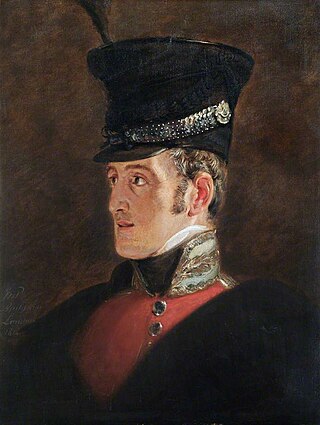
Field Marshal John Colborne, 1st Baron Seaton, was a British Army officer and colonial governor. After taking part as a junior officer in the Anglo-Russian invasion of Holland, Sir Ralph Abercromby's expedition to Egypt and then the War of the Third Coalition, he served as military secretary to Sir John Moore at the Battle of Corunna. He then commanded the 2nd Battalion of the 66th Regiment of Foot and, later, the 52nd Regiment of Foot at many of the battles of the Peninsular War. At the Battle of Waterloo, Colborne on his own initiative brought the 52nd Regiment of Foot forward, took up a flanking position in relation to the French Imperial Guard and then, after firing repeated volleys into their flank, charged at the Guard so driving them back in disorder.

The Commander-in-Chief of the Forces, later Commander-in-Chief, British Army, or just the Commander-in-Chief (C-in-C), was (intermittently) the professional head of the English Army from 1660 to 1707 and of the British Army from 1707 until 1904. In 1904 the office was replaced with the creation of the Army Council and the appointment of Chief of the General Staff.
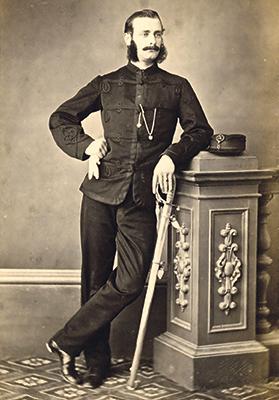
Andrew Moynihan, VC was an English recipient of the Victoria Cross, the highest and most prestigious award for gallantry in the face of the enemy that can be awarded to British and Commonwealth forces.
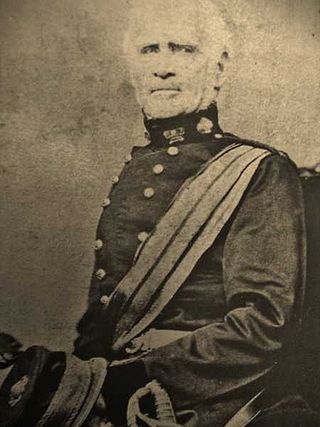
Field Marshal Sir William Shearman Rowan, was a British Army officer. He served in the Peninsular War and then the Hundred Days, fighting at the Battle of Waterloo and taking part in an important charge led by Sir John Colborne against the Imperial Guard when he was wounded. He later assisted Colborne in Colborne's new role as Acting Governor General of British North America during the rebellions by the Patriote movement in 1837. Rowan returned to Canada as Commander-in-Chief, North America in which role he made an important conciliatory speech in response to the burning of the Parliament Buildings in Montreal by an angry mob in April 1849.
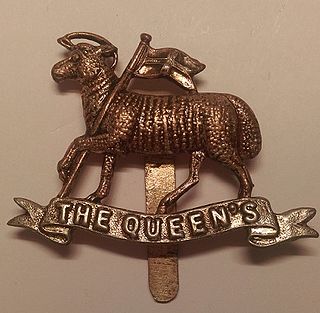
The Queen's Royal Regiment (West Surrey) was a line infantry regiment of the English and later the British Army from 1661 to 1959. It was the senior English line infantry regiment of the British Army, behind only the Royal Scots in the British Army line infantry order of precedence.
General Sir Torquhil George Matheson, 5th Baronet, was a Scottish officer who commanded three different divisions of the British Army in some of the heaviest fighting of the First World War. He had previously served in the militia and with the Coldstream Guards in the Second Boer War. For his service, he was knighted in 1921 and in 1944 he inherited the Matheson baronetcy from his brother Roderick.
Major-General William Henry Muir Lowe was a British Army officer who commanded the British forces in Dublin during the Easter Rising of 1916 and received the surrender of the Irish republican forces.
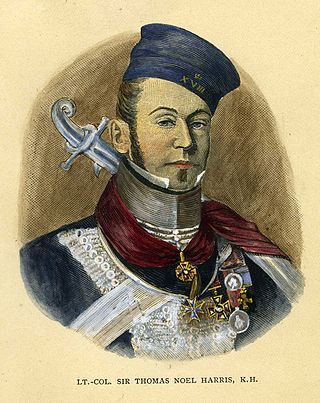
Colonel Sir Thomas Noel Harris was a British Army officer who fought during the Peninsular War and the Waterloo Campaign before finishing his career as Chief Magistrate of Gibraltar. He is notably one of the only British officers to be present at both Leipzig and Waterloo

Philip Babington (1632–1690) was an English military officer, who served in the armies of the Commonwealth of England, the Dutch Republic and England. He accompanied William III to England in the 1688 Glorious Revolution and was Member of Parliament and Governor for Berwick-upon-Tweed from 1689 to 1690.
Colonel Charles Hagart CB was a British Army officer.
Brigadier general Duncan Alwyn Macfarlane, was a British Army officer, most notably Colonel of the King's Own Scottish Borderers from 1928 to 1938.
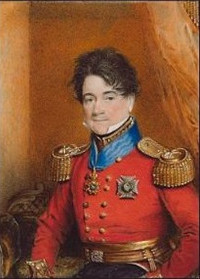
General Sir Thomas Hawker KCH was a British Army cavalry officer. Hawker began his career in the 11th Light Dragoons in 1795 and fought with them during the 1799 Anglo-Russian invasion of Holland. In 1804, he purchased the rank of major with the 20th Light Dragoons and served with them in Spain during the Peninsular War. He was promoted to command of the regiment in 1808. Hawker served in the force sent to occupy the Republic of Genoa in 1814 and shortly after was promoted to colonel and given command of a light cavalry brigade. Spending some time on half pay after the end of the Napoleonic Wars he returned to active service as lieutenant-colonel of the 13th Light Dragoons. Hawker was in the East Indies between 1822--26 and 1830-36 and was promoted to major-general in 1825. He was appointed a Knight Commander of the Royal Guelphic Order in 1837 and colonel of the 6th Regiment of Dragoon Guards in 1839. Hawker was promoted to the brevet rank of general in 1854.
Major General William Robb was a senior British Army officer, who served in both World War I and World War II.
Major General Peter Brown was a senior British Army officer, who served in the Napoleonic Wars and was instrumental in the development of the education of the children of British servicemen in the Victorian era.
General William Hampton Parlby was a senior British Army officer, who served in British cavalry regiments in India and the Crimean War.
General William Neville Custance was a senior British Army officer, who served initially as an infantry officer; but mainly as cavalry officer. Seeing service in the Crimean War and the Indian Rebellion of 1857.

General Lord Mark Ralph George Kerr GCB was a British Army officer who served in the Crimean War and in India.
The Fifeshire Militia was an auxiliary regiment raised in Fifeshire, Scotland, in 1798. It served in home defence during the Napoleonic Wars and again during the Crimean War when it was converted into an artillery unit as the Fifeshire Artillery Militia. It served in home defence again during the Indian Mutiny and the Second Boer War. It was disbanded in 1909.
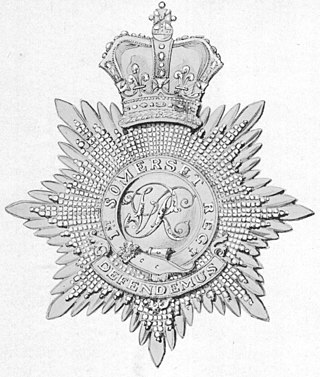
The 1st Somerset Militia was an auxiliary military unit in the county of Somerset in South West England. First organised during the Seven Years' War it served on internal security and home defence duties in all of Britain's major wars. It later became a battalion of the Somerset Light Infantry and supplied thousands of recruits to the fighting battalions during World War I. After 1921 the militia had only a shadowy existence until its final abolition in 1953.










